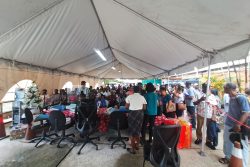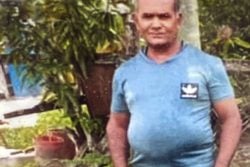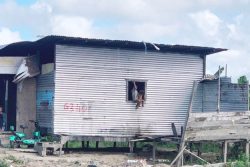Barbara Gainer was not prepared to accept no for answer when she barged into the Ministry of Housing to acquire one of the available three-bedroom houses built at Festival City for Carifesta 72.
Armed with a determined spirit, Gainer presented her case to the officers who contended that applicants for those houses must be able to pay the mortgage at the end of the month. A single woman, Gainer assured the ministry that she could raise the set sum to pay the mortgage, if they would only take a chance on her. When she got her “yes” the woman and her three nieces moved into the house in ‘Carifesta City’ and settled down to the task of getting the community moving, becoming one of its most motivated residents.
It was a moment of excitement for Gainer. What took place thereafter was the transfer of the soul of the Caribbean Festival of Creative Arts into the Carifesta Village. The villagers had accepted the call to “feed, clothe and house the nation.” They cultivated their yards and the produce was sold in the markets and could be found in the shelves of supermarkets.
Houses that were built and later sold through the hire/purchase system to accommodate families were soon made bigger and many single-storeys doubled in dimension. Some residents were so motivated by the challenge, soon even parapets were cultivated. The playing field allocated to the youths of the new village was soon in playing condition since the self-help spirit inspired by Bonny Fernandes and others prevailed.
For her part, Gainer bore the challenges in mind and kept to her earlier promise of paying her mortgage on time. The fact that the three-bedroom house has now virtually doubled its size tells its own story. In her day-to-day life she impressed on her three nieces the importance of education. The fact that all three became teachers of authority in one field or another, further tells the story of Gainer, a woman whose motto was ‘tomorrow must be better than today’ achievements.
Currently there is a short cut linking North Ruimveldt to the South Ruimveldt community. That concrete short cut was not an overnight thing. It was through the efforts of Gainer, her colleagues and other self-helpers who had persuaded residents to donate their time and money to erect and complete the passageway.
The entire village tells the story of Carifesta; whether it be late Surinamese Poet, Debru, performing on the stage and telling of how the Lord whistled when he viewed the wonderful work of his creation – woman; or the women of Suriname with their various head ties and wraps that shunned with a ‘Go to hell’, or delighted with ‘A pleasant good morning to you’, or better still, to ring diamond with the Grenadian singers who were celebrating Dolphus’s return from the gold belching mountains of Guyana. Surely, Dolphus’s girlfriend was happy with the assurance of her boyfriend’s return, and the gold teeth and diamond ring that evidenced this assurance. One way or another, the Carifesta Village and the spirit of self-help captured the soul of Carifesta. Whether it turns to the Spanish speakers of the Caribbean, the Dutch, French or English speaking people, the Caribbean Festival of Creative Arts had its origin in Guyana. Years later it returned home and was hosted under the auspices of two young culture ministers, the late Shirley Merle Field-Ridley and Dr Frank Anthony.





